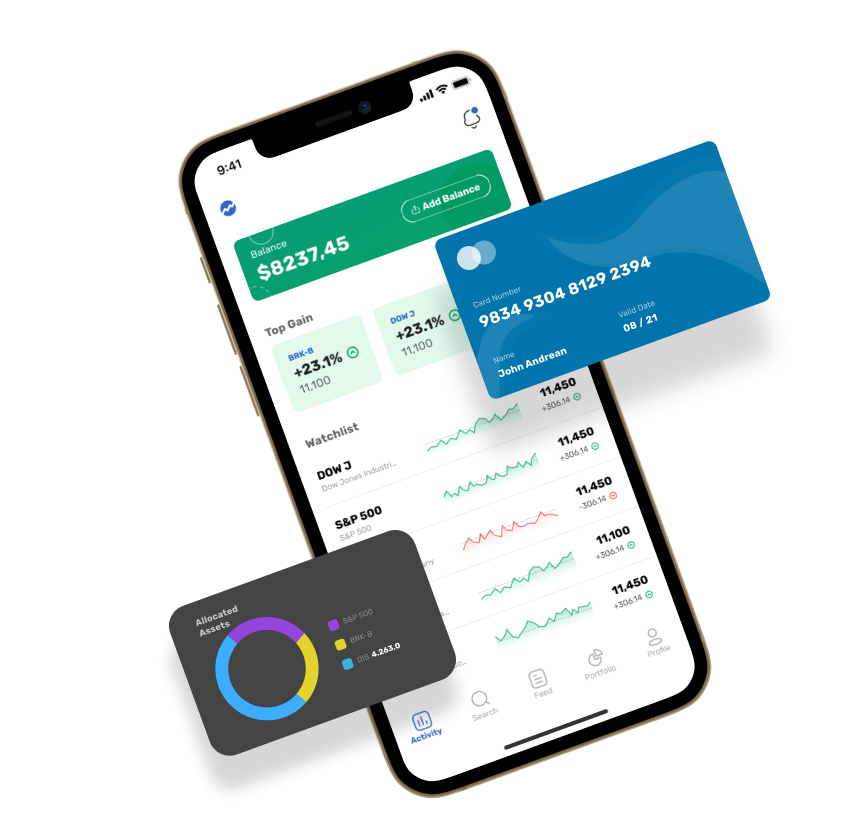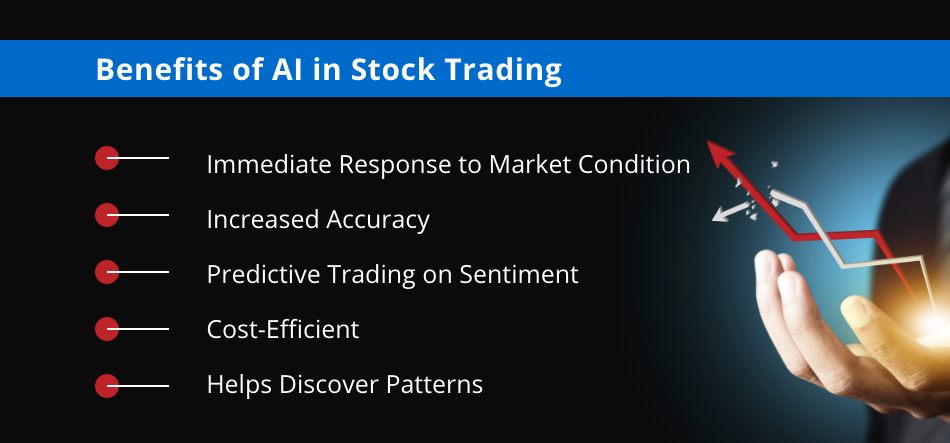20 Recommended News On Choosing AI Stock Predictions Analysis Websites
20 Recommended News On Choosing AI Stock Predictions Analysis Websites
Blog Article
Top 10 Tips For Assessing The Integration Of Ai Analyzing/Predicting Stocks Trading Platforms
Integration and compatibility are critical factors when evaluating AI platform for stock prediction and analysis. Platforms that seamlessly integrate with existing tools, workflows and systems will increase efficiency and productivity. Here are the 10 best ways to evaluate the compatibility and integration between these platforms.
1. Check Brokerage Integration
Ensure that your platform integrates seamlessly with the brokerage or trading service you want.
Trade execution: Determine if the platform supports direct trade execution via the integrated broker.
Account Synchronization: Ensure whether the platform is able to sync live-time balances on your account as well as positions and transaction history.
2. Assessment of API availability
API access: Ensure the platform has an API (Application Programming Interface) that allows developers to develop customized applications and streamline workflows.
API documentation: Check if the API is well-documented with clear examples and use cases.
Limitations on rate. Make sure that the API you're considering has reasonable rates and can handle the volume of your use.
3. Assessment of Third-Party Tools Integration
Popular tools: Find out whether your device is compatible with the most popular tools like Google Sheets or Excel.
Data import/export: Make sure your platform supports easy export/import of data to and from other tools.
Extensions/Plugins: Verify whether the platform is compatible with plugins or extensions for added features.
4. Test Compatibility With Operating Systems
Desktop compatibility: Ensure the application works with your preferred operating system (Windows, macOS, Linux).
Mobile compatibility Check whether the platform provides apps that works with iOS or Android.
Web-based: If you'd like to be flexible, verify if your platform can also be accessed using the standard web browser.
5. Assess Data Integration Capabilities
Data sources: Check whether the platform is compatible with a variety of data sources (e.g. market data providers or news feeds).
Real-time data feeds: Verify if the platform supports real-time data integration to provide the most current analysis.
Import historical data: Determine whether the platform supports importing historical data for backtesting or for analysis.
6. Evaluate cloud and on-premise compatible
Cloud-based Platforms: The platform should be accessible from anywhere with an internet connection.
Solutions on-premise. If you are interested in deploying on-premise be sure to check whether your platform supports it.
Hybrid models: Determine whether the cloud-based platform integrates and on premise capabilities.
7. Make sure to check for Cross Platform Syncronization
Device synchronization. Make sure the platform is synchronized to transfer settings and data between the devices (desktops/laptops/mobiles/tablets).
Real-time updates: Make sure that the changes you make on one device immediately show up on other devices.
Access from offline: Find out whether the platform supports restricted functionality or data access even when offline.
8. Verify compatibility between trading strategies.
Algorithmic trading: Make sure the platform is compatible with algorithms or automated trading strategies.
Custom indicators. Check whether the platform permits you to utilize scripts or technical indicators.
Backtesting strategy: Verify if your platform allows you to backtest trading strategies using historical data.
9. Assess Security and Compliance
Data encryption - Ensure that your platform uses encryption for all your data, at all times, including when it is at rest.
Authentication Check to determine if your platform supports a secure authentication method (e.g. 2-factor authentication).
Regulatory compliance: Verify that the platform is compliant with the relevant regulations (e.g. GDPR, FINRA or SEC).
10. Test Scalability and Performance
Scalability: Ensure the platform is able to handle the increasing amount of data and users as your needs grow.
Performance under load: Determine whether your platform is able to adapt to market conditions with high volatility.
Utilization of resources: Make sure the platform makes efficient use of system resources such as memory, CPU and bandwidth.
Bonus Tips
Users' feedback: Look for testimonials and reviews from users in evaluating the site.
Free trial: You can use a demo or free trial to test the platform's compatibility with your current workflows and tools.
Customer support: Make sure that the platform provides a solid assistance for integration-related problems.
Following these tips can aid you in evaluating the ability to integrate seamlessly and with ease AI trading platforms which predict and analyze stock prices. They will also enhance the performance of your trading. Take a look at the most popular stock ai for more info including using ai to trade stocks, ai investing platform, ai stocks, ai investing app, ai trade, ai trade, ai trade, ai for stock predictions, options ai, stock ai and more.
Top 10 Tips For Assessing Regulatory Compliance Using Ai For Stock Predicting/Analyzing Trading Platforms
When it comes to evaluating AI trading platforms, compliance with regulatory requirements is crucial. Compliance helps to ensure that the platform operates within legal frameworks and protecting the privacy of users. Here are top 10 tips for evaluating the compliance of these platforms.
1. Verify Registration and License
The regulatory bodies: Make sure the platform has been registered and licensed with appropriate financial regulatory bodies (e.g. SEC in U.S.A., FCA UK, ASIC Australia).
Make sure that the brokers included in the platform are licensed and licensed and.
Public records: Go to the website of the regulator to see the status of registration, as well as past violations.
2. Compliance with Data Privacy Assessment
GDPR If a platform is operating within the EU or providing services to EU users, the platform should comply with the General Data Protection Regulation.
CCPA – For Californian users, check compliance with California Consumer Privacy Act.
Policies on handling data. Examine the platform's privacy policy to ensure it clearly describes how data about users is used to collect, share, and kept.
3. Assessing Anti-Money Laundering measures
AML policies: Ensure that the platform is able to abide by AML policies that are in place to stop and identify cash laundering.
KYC procedures: Determine that the platform adheres to Know Your Customer (KYC) procedures for verifying the identities of users.
Monitoring transactions: Find out if your platform monitors transactions for suspicious activities and notifies the authorities.
4. Make sure you are in compliance with Trading Regulations
Market manipulation: Verify that the platform is equipped to stop market manipulations such as spoofing, wash trading.
Order types: Check that the platform adheres to rules regarding order types.
Best execution: Make sure to determine if the platform adheres best execution practice which guarantees that trades are executed at the lowest price.
5. Assessment of Cybersecurity's compliance
Data encryption: Ensure the platform has encryption in place to protect the data of users in transit and in rest.
Incident response: Verify if the platform has a clearly defined incident response plan for data breaches or cyberattacks.
Certifications: Check if the platform has been accredited to be secure (e.g. ISO 27001, SOC 2)
6. Evaluate Transparency and Transparency
Disclosure of fees. Be sure that all fees and charges are disclosed clearly, including any additional or hidden costs.
Risk disclosure: Verify if the platform has clear risk disclosures, specifically when it comes to high-risk trading or leveraged strategies.
Performance reporting: Determine whether the platform offers transparent and accurate performance reports for its AI models.
7. Verify that you are in compliance with international regulations
Trading cross-border If you plan to conduct international trade, ensure that the platform is compliant with all applicable laws.
Tax reporting: Find out if the platform offers tools or reports that help users adhere to tax regulations.
Conformity with sanctions: Ensure that the platform follows sanctions and does NOT allow dealings or transactions with countries or entities that are banned.
8. Review Audit Trails and Record-Keeping
Records of transactions: The platform should maintain detailed records on the transactions that are used for regulatory and auditor reasons.
Recordings of user activity: Check whether the platform tracks users' activities, such as logins or trades as well as changes to the settings for your account.
Audit readiness: Ensure the platform is equipped with all the necessary documentation and logs to pass a regulatory review.
9. Assessment of Compliance to AI Specific Regulations
Algorithmic rules for trading: If the trading platform uses algorithms, ensure that it complies with the regulations of MiFID II for Europe or Reg. SCI for the U.S.
Bias and Fairness: Verify that the platform monitors, and mitigates, biases in its AI models in order to guarantee fair trade.
Explainability. Certain regulations could need the platform to explain AI-driven prediction and decisions.
10. Review user feedback and review the regulatory history
User reviews: Use feedback from users to assess the platform's regulatory conformity.
The history of regulatory compliance: Find out whether the platform has any records of violations to the law and penalties, fines or fines.
Third-party audits: Verify that the platform has regular audits by third parties to ensure compliance with regulations.
Bonus Tips
Legal consultation: Contact an expert in the field to check whether your website is in compliance with laws.
Free trial period: You may avail a demo or a free trial to try out the compliance features of the platform and its documentation.
Customer Support: Ensure that the platform offers customer support for any questions or problems related to compliance.
Following these tips can help you evaluate the compliance with regulations for an AI platforms for analyzing and predicting stocks. You'll be able to choose a system that is compliant with legal frameworks while protecting your interests. The compliance reduces legal risk and increases confidence in the platform. Read the recommended funny post on investing with ai for website examples including best ai trading platform, best ai stocks to buy now, best ai for stock trading, best stock prediction website, ai copyright signals, ai for trading stocks, stock predictor, best ai trading platform, ai for trading stocks, best ai penny stocks and more.